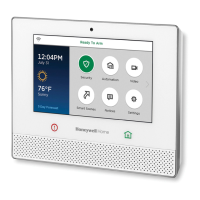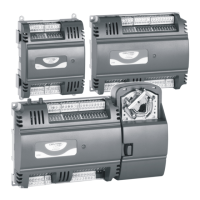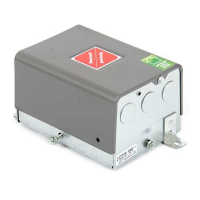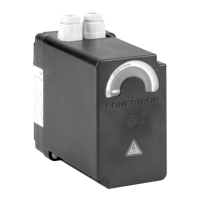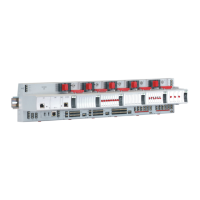59
Regulatory Agency Statements
FEDERAL COMMUNICATIONS COMMISSION (FCC) & INDUSTRY CANADA (IC) STATEMENTS
The user shall not make any changes or modifications to the equipment unless authorized by the Installation
Instructions or User's Manual. Unauthorized changes or modifications could void the user's authority to operate the
equipment.
CLASS B DIGITAL DEVICE STATEMENT
This equipment has been tested to FCC requirements and has been found acceptable for use. The FCC requires the
following statement for your information:
This equipment generates and uses radio frequency energy and if not installed and used properly, that is, in strict
accordance with the manufacturer's instructions, may cause interference to radio and television reception. It has been
type tested and found to comply with the limits for a Class B computing device in accordance with the specifications
in Part 15 of FCC Rules, which are designed to provide reasonable protection against such interference in a residential
installation. However, there is no guarantee that interference will not occur in a particular installation. If this
equipment does cause interference to radio or television reception, which can be determined by turning the
equipment off and on, the user is encouraged to try to correct the interference by one or more of the following
measures:
• If using an indoor antenna, have a quality outdoor antenna installed.
• Reorient the receiving antenna until interference is reduced or eliminated.
• Move the radio or television receiver away from the receiver/control.
• Move the antenna leads away from any wire runs to the receiver/control.
• Plug the receiver/control into a different outlet so that it and the radio or television receiver are on different
branch circuits.
• Consult the dealer or an experienced radio/TV technician for help.
INDUSTRY CANADA CLASS B STATEMENT
This Class B digital apparatus complies with Canadian ICES-003.
Cet appareil numérique de la classe B est conforme à la norme NMB-003 du Canada.
FCC / IC STATEMENT
This device complies with Part 15 of the FCC Rules, and Industry Canada’s license-exempt RSSs. Operation is subject
to the following two conditions: (1) This device may not cause harmful interference, and (2) This device must accept
any interference received, including interference that may cause undesired operation.
Cet appareil est conforme à la partie 15 des règles de la FCC et exempt de licence RSS d’Industrie Canada. Son
fonctionnement est soumis aux conditions suivantes: (1) Cet appareil ne doit pas causer d’interférences nuisibles. (2) Cet
appareil doit accepter toute interférence reçue y compris les interférences causant une réception indésirable.
The antenna(s) used for this device must be installed to provide a separation distance of at least 7.8
inches (20 cm) from all persons and must not be co-located or operating in conjunction with any other
antenna or transmitter except in accordance with FCC and ISED multi-transmitter product procedures.
MISE EN GARDE
Exposition aux Fréquences Radio:
La/les antenne(s) utilisée(s) pour cet émetteur doit/doivent être
installée(s) à une distance de séparation d'au moins 20 cm (7,8 pouces) de toute personne et ne pas
être située(s) ni fonctionner parallèlement à tout autre transmetteur ou antenne, excepté en conformité
avec les procédures de produit multi transmetteur FCC et ISED.
IMPORTANT NOTE ABOUT EXTERNAL ANTENNAS
If an external cellular radio antenna is used, the antenna may be installed or replaced ONLY by a professional
installer.
TO THE INSTALLER
Lyric-3G, Lyric-3GC: The external antenna must not exceed a maximum directional gain (including cable loss) of 6.0 dBi at
850 MHz and 2.5 dBi at 1900 MHz. Under no conditions may an antenna gain be used that would exceed the ERP and EIRP
power limits as specified in FCC Parts 22H and 24E and 27, and IC RSS-130, RSS-132, RSS-133, and RSS-139.
Lyric-CDMA: The external antenna must not exceed a maximum directional gain (including cable loss) of 9.3 dBi at 850
MHz and 8.2 dBi at 1900 MHz. Under no conditions may an antenna gain be used that would exceed the ERP and EIRP
power limits as specified in FCC Parts 22H and 24E and 27.
LYRICLTE-A, LYRICLTE-C: This device is to be used in mobile or fixed applications only. For mobile and fixed operating
configurations the antenna gain, including cable loss, must not exceed 3.25 dBi (US) or 0.6dBi (Canada) at 850 MHz, 5.5 dBi
at 1700 MHz, 2.5dBi at 1900 MHz for satisfying RF exposure compliance. Under no conditions may an antenna gain be used
that would exceed the ERP and EIRP power limits as specified in Part 22H and 24E and 27, and IC RSS-130, RSS-132, RSS-
133, and RSS-139.
LYRICLTE-V: This device is to be used in mobile or fixed applications only. For mobile and fixed operating configurations
the antenna gain, including cable loss, must not exceed 7.31 dBi at 780 MHz, 7.35 dBi at 1700 MHz for satisfying RF exposure
compliance. Under no conditions may an antenna gain be used that would exceed the ERP and EIRP power limits as
specified in Part 22H and 24E and 27.

